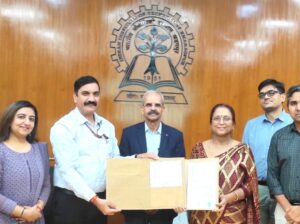New Delhi: Graduate Aptitude Test in Engineering (GATE) is one of the toughest competitive examinations in India. On an average more than nine lakh candidates apply for the test each year while only 15-17% candidates qualify for the test. For GATE 2020, more than 8.58 lakh candidates have registered to appear the test compared to 9.27 lakh candidates in 2019 GATE.
GATE 2020 will be held in 25 subjects, known as Papers. GATE 2020 will be conducted on February 1-2 and 8-9 in more than 100 cities in India and six international cities: Addis Ababa (Ethiopia), Colombo (Sri Lanka), Dhaka (Bangladesh), Dubai (UAE), Kathmandu (Nepal) and Singapore.
Here, SkillOutlook presents the key points of composition and pattern of GATE 2020, which will help candidates to understand the exam better.
GATE Exam Overview: All the papers of the GATE 2020 examination will be for 3 hours duration and they consist of 65 questions for a total of 100 marks. Examination for all the 25 subjects (papers) will be conducted as Online Computer Based Test (CBT).
GATE 2020 Question Papers: GATE 2020 will have questions of two different types in all the papers: Multiple Choice Questions (MCQ); and Numerical Answer Type (NAT) Questions.
(i) Multiple Choice Questions (MCQ): These type of questions will carry 1 or 2 marks each in all the papers and sections. These questions are objective in nature, and each will have a choice of four answers, out of which the candidate has to select (mark) the correct answer.
In all papers, GA questions carry a total of 15 marks. The GA section includes 5 questions carrying 1-mark each (sub-total 5 marks) and 5 questions carrying 2-marks each (sub-total 10 marks).
Negative Marking for Wrong Answers: For a wrong answer chosen in a MCQ, there will be negative marking. For 1-mark MCQ, 1/3 mark will be deducted for a wrong answer. Likewise, for 2-mark MCQ, 2/3 mark will be deducted for a wrong answer.
(ii) Numerical Answer Type (NAT) Questions carrying 1 or 2 marks each in all the papers and sections. For these questions, the answer is a signed real number, which needs to be entered by the candidate using the virtual numeric keypad on the monitor (keyboard of the computer will be disabled). No choices will be shown for these type of questions. The answer can be a number such as 10 or -10 (an integer only). The answer may be in decimals as well, for example, 10.1 (one decimal) or 10.01 (two decimals) or -10.001 (three decimals). These questions will be mentioned with, up to which decimal places, the candidates need to present the answer.
Also, for some NAT type problems an appropriate range will be considered while evaluating the numerical answer type questions so that the candidate is not unduly penalized due to the usual round-off errors.
There is NO negative marking for a wrong answer in NAT questions.
Marks Pattern: In all the papers, there will be a total of 65 questions carrying 100 marks, out of which 10 questions carrying a total of 15 marks will be on General Aptitude (GA), which is intended to test the Language and Analytical Skills.
In the papers bearing the codes AE, AG, BM, BT, CE, CH, CS, EC, EE, IN, ME, MN, MT, PE, PI,
TF and XE, the Engineering Mathematics will carry around 15% of the total marks, the General Aptitude section will carry 15% of the total marks and the remaining around 70% of the total marks is devoted to the subject of the paper.
In the papers bearing the codes AR, CY, EY, GG, MA, PH, ST and XL, the General Aptitude section will carry 15% of the total marks and the remaining 85% of the total marks is devoted to the subject of the paper.
The questions in a paper may be designed to test the following abilities: Recall, Comprehension, Application, and Analysis and Synthesis.
GATE 2020 results will be announced on the 16 March 2020 and will be available on the GOAPS Website. GATE 2020 score is valid for three years from the date of announcement of the results.









